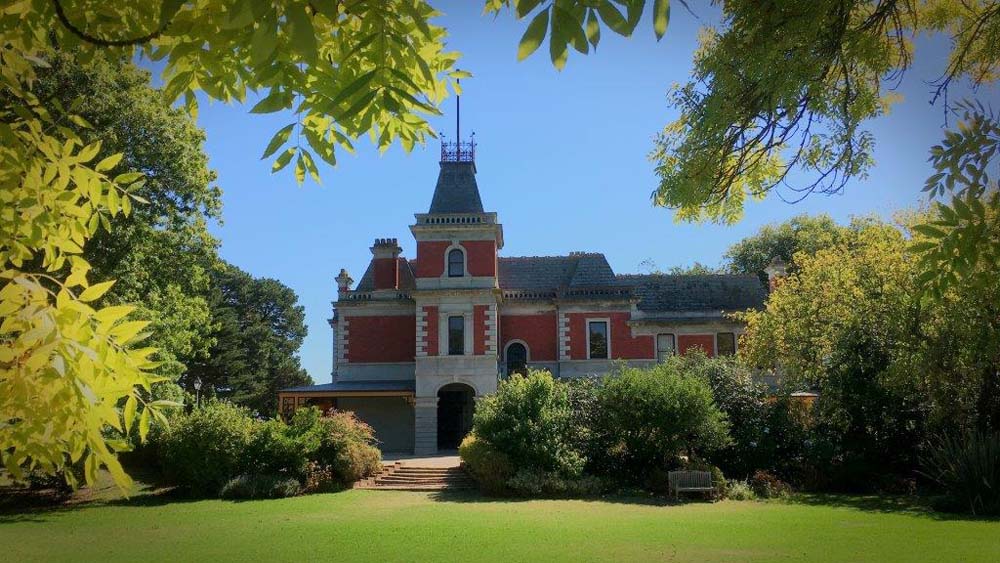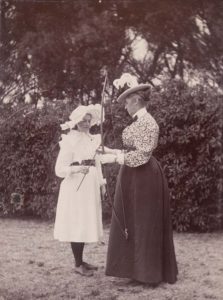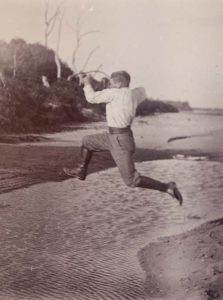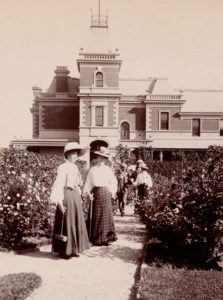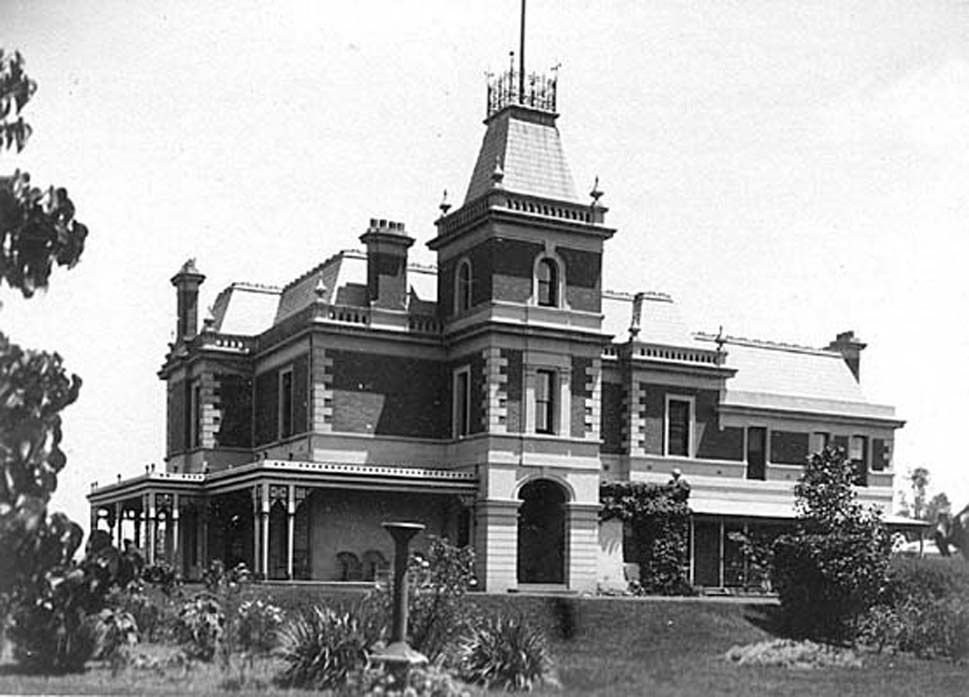
By Ilma Hackett – Balnarring and District Historical Society
In the winter of 1896 disgruntled passengers on the Peninsula railway lines were informed that the delay in services was due to exceptionally heavy traffic caused by the transportation of bricks to Bittern. These were for the Hon. F.S. Grimwade who was building a mansion on his property ‘Coolart.’ The bricks were being moved daily, seventy truckloads in all. They sat at the Bittern station until they could be hauled, by oxen, the extra three miles to Grimwade’s recently acquired property.
Change of Ownership
Frederick Sheppard Grimwade had purchased ‘Coolart’ the previous year from the estate of John Benn for £10,000 cash. It was a well-run property, one of the most prosperous on the Mornington Peninsula. Benn had built up the property during his twenty years of ownership and turned it into a showpiece with many features of a model farm where he bred shorthorn cattle, horses and Shetland ponies, and grazed sheep.
‘Coolart’ was one of the original runs on the Peninsula. The young Meyrick cousins took up 16,000 acres of Crown land but were nor able to weather the Depression of the early 1840s. William Payne did much better. The goldrush ensured he had a market for his livestock. He had reduced the area covered by the lease, made substantial improvements to the farmed area and when the property was sold in 1853 it was an attractive investment. It briefly interested Harry Drew before passing to Joseph Hann. Hann took advantage of the changing land laws and purchased some 2,000 acres from the Crown while retaining the remaining 6,000 acres under lease. When Hann left the district for Queensland, this land was acquired by the mercantile company, Sumner, Grice and Benn. Benn later became sole owner until his death.
The new owner, Grimwade was a wealthy industrialist, head of Felton, Grimwade a Co., a firm he founded in 1867 with Alfred Felton.
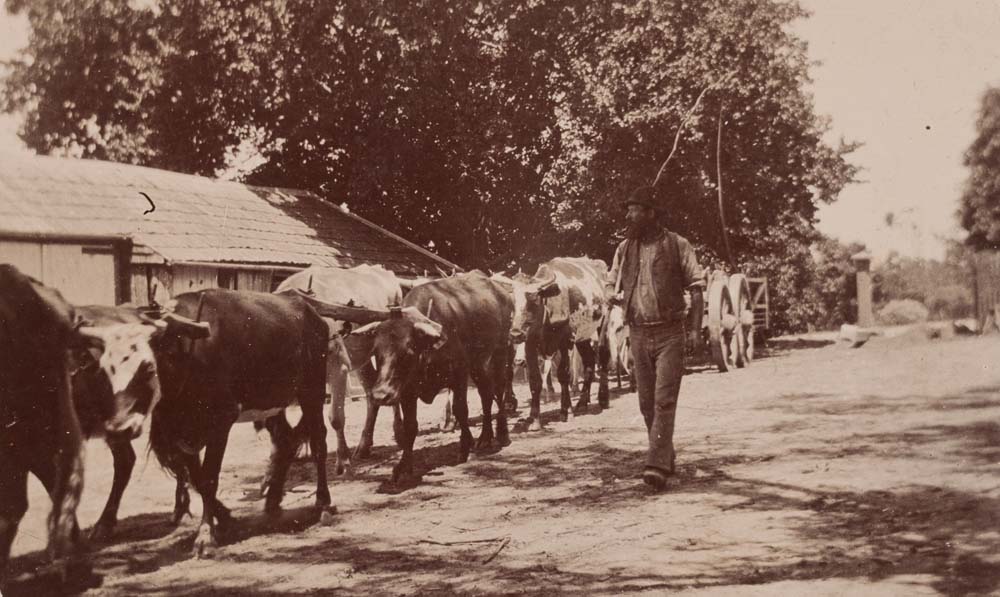
Grimwade’s Background
Born in 1840 in Harleston, in the English county of Norfolk, Grimwade had arrived in Melbourne in 1863, aged twenty-two. In England he was apprenticed to his father, a wholesale druggist and, on arrival in Melbourne, had joined wholesale druggists Edward and Henry Youngman. When Edward Youngman drowned in a shipwreck, his brother sold the business to Grimwade and his new partner, Alfred Felton. Felton, Grimwade & Co. opened in premises in Flinders Lane where, at first, they manufactured proprietary medicines (pills and powders). Soon they branched into the manufacture of industrial chemicals.
Grimwade had a canny head for business. He had borrowed £8,000 to buy the business and this was soon recouped many times over. The company expanded to other sites, establishing chemical works to manufacture any chemicals that were urgently needed by the fast growing economy of a young Melbourne. Factories were built to accommodate the making of mineral acids, compressed gases, ammonia and fertilizers. Glass works were set up to make bottles for their products. Felton, Grimwade & Co was in partnership with Bosisto & Co., producers of eucalyptus oil. The drug house had subsidiary interests in Western Australia and in N.Z. and they had a partnership in the Adelaide Chemical Works Co. Their only failed venture was a salt mining company (in association with R Cheetham) on French Island. Grimwade had a reputation for being reliable, honest and determined. He believed hard work led to achievement and he became a wealthy man.
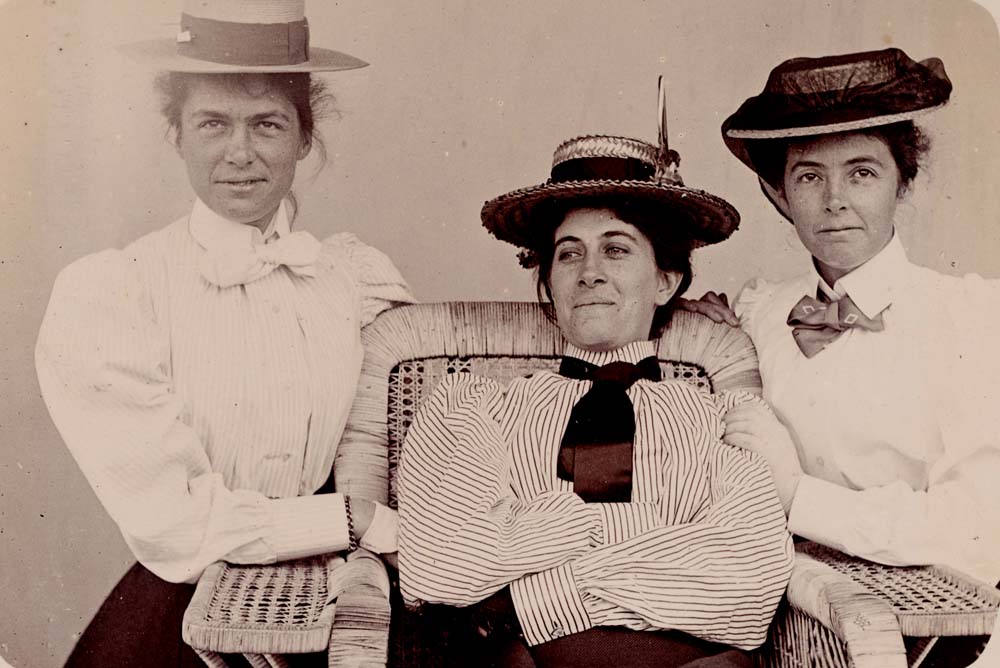
Family Life
In 1865, when he was 24 years old, Frederick Grimwade married Tasmanian-born Jessie Taylor Sprunt at St Paul’s Church, Kyneton. The couple made their home in St Kilda until they built a fashionable new house, in the Italianate style, in Caulfield. They called it ‘Harleston’ after Grimwade’s place of birth. ‘Harleston’ sat on a seven-acre lot, part of which was farm land. The couple became parents to nine children although two, a son and a daughter, died in infancy. Their eldest child, a son, Norton, was born in 1866; their last born, Freda, arrived in 1884. Three sons, Norton, Harold and Russell qualified as pharmacists, all working in the family company; the other son, Sheppard, became a doctor. Freda had two older sisters, Elizabeth and Alice, and the three girls were brought up to take an active interest in charitable work.
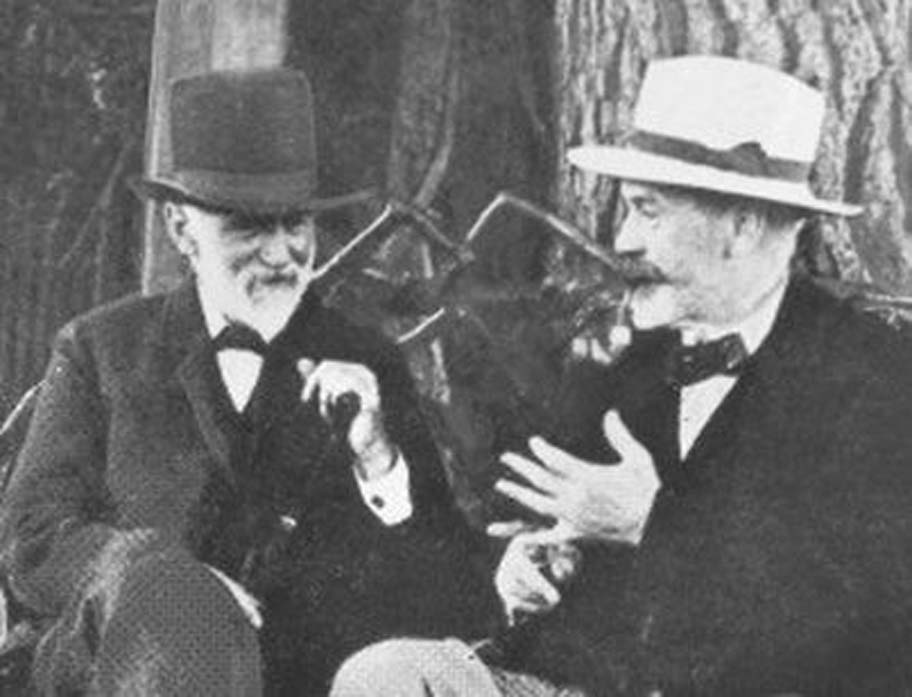
The Honourable F. S. Grimwade, the public figure
Grimwade’s political career started in 1891 when he became a member of the Legislative Council, representing the North Yarra province. Prior to entering state politics he had, for five years, been a member of the Caulfield Shire Council. He was a representative on the Council of the Railways Commission and of the Tariff Commission. He was a member of the Melbourne Chamber of Commerce, and of two Exhibition Commissions. For twelve years he was chairman of the directors of the Royal Bank of Australia and one of the foundation members of the Australian Club.
Grimwade was a devout Anglican. For twenty years he was a member of the Church of England Assembly, a member of the Diocesan council and a lay canon. Business and religion were cornerstones of his life. For the Grimwade family ‘Coolart’ became their holiday home, a place to relax.
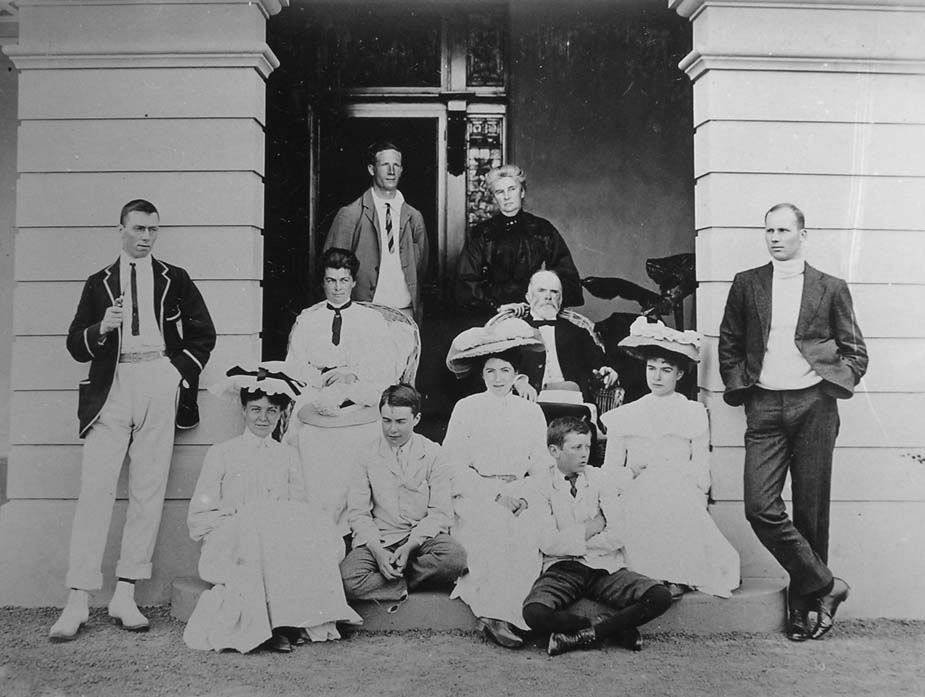
The Holiday Home
The mansion at Balnarring was two-storeyed, again designed in the Italianate style, built of red brick with the corner masonry and window surrounds rendered in white for contrast. A colonnaded veranda with tiled paving ran around three sides of the building. Long windows let light into the many rooms. The four-sided, steeply sloping slate roof was punctuated by chimneys, projections, low balustrades and dominated by the high, square tower which rose over the main entrance. From the tower there was an uninterrupted view across the waters of Western Port Bay. The building was spacious. There were twenty-seven rooms all told and each major room had a fireplace. Wood was no problem; it was gathered from the property. One end of the building housed quarters for the domestic staff as well as a well laid out kitchen.
The house was reached by a long, tree-lined driveway that came in from the road and passed the manager’s house and a cluster of outer farm buildings. The first glimpse of the house itself was the tower showing above the trees.
Older Buildings
The new mansion rose on the site of an earlier homestead which was on a rise of land above the creek that separated it from the shore. All that remained of the older building was one separate wing. A low structure, built some forty years before, it was of buff-coloured bricks, hand-made on the property. This wing, later named ‘The Barracks’ as farm workers were housed there, had three rooms and an external bread oven. Each room opened onto a bricked pathway under a roofed veranda. The dairy and meat house were below the house, built into the hill slope for coolness. There were separate lavatories bunched together in a block.
The Family on Holiday
When Grimwade bought ‘Coolart’ he was fifty-five years of age, a short, sturdy man whose receding dark hair and beard had silvered. His youngest daughter was eleven and his three eldest children had married. The house was invariably filled with family and friends arriving from Melbourne, usually by train. They alighted at Bittern station where they were met by horse and buggy to cover the final few miles.
Mornings at ‘Coolart’ started early with all the males meeting on the beach for a swim. F.S. himself set the example and only the elderly were excused. Pyjamas were shed and, as was the custom of the day, swimmers went nude. The swim was followed by a run along the sand to warm up before the party returned to the house for breakfast.
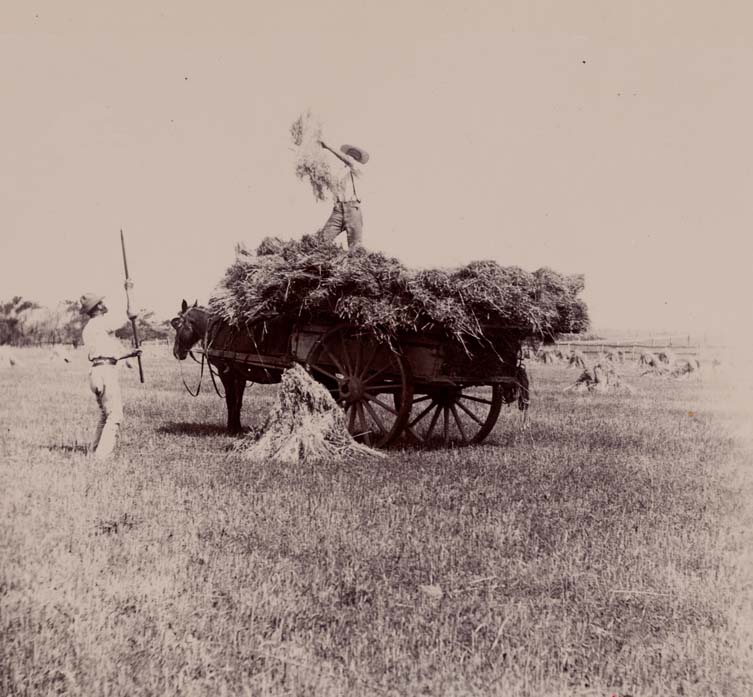
The Working Farm
After breakfast Grimwade made the rounds of the property with his manager, William Morris, to inspect his stock and attend farm business. This was no mere hobby farm, but a profitable, working property. Grimwade, like his predecessor, bred horses, Shorthorn cattle and sheep. The 2,000-acre property was stocked with 100 head of cattle, about 100 horses and 1,400 sheep, both Shropshire, Cotswold and crossbred. At the Royal Show in 1900 only four animals were exhibited in the Cotswold class. All were from ‘Coolart’; thus Grimwade’s sheep took off the 1st, 2nd and Championship prizes for ewes and for rams.

Initially Morris, a Welshman, was offered the position as manager by John Benn but Benn had died before Morris could start work. He commenced working for Grimwade and soon became a trusted employee. The two shared a love of animals and their farm animals, bulls included, were docile creatures. As Grimwade explained to a somewhat timid reporter from “Punch’ who had come to write an article about the Member of Parliament’s country property, “I always make it a feature of the management of my farm that none of my dumb animals shall be in any way frightened or ill-used.” [Punch, 21st April 1904].
Horses were Grimwade’s passion especially his prize stud stallion– Bobadil. Grimwade needed no excuse to parade Bobadil before his visitors. Although passionate about racehorses and racing he did not bet. “I don’t want your money and I don’t want you to have mine’. [Flinders Lane, Russell Grimwade p27] He showed an interest in the local Emu Plains Race Course but whenever one of his horses raced, the result was a certain win.
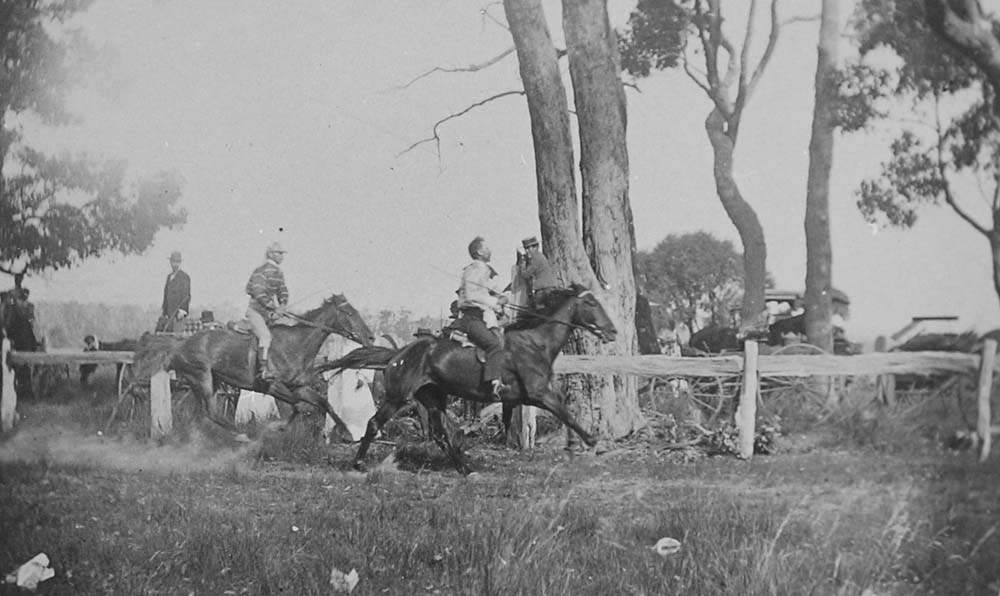
Entertainments
The races were just one entertainment. There was much to do at ‘Coolart’. The beach was a short walk along a bush track between the trees, across the creek and through the dunes. There were picnics at the beach and boating on the creek. The estate was extensive enough to allow riding and hunting while outdoor sports such as archery and croquet were practised on the lawns. Or perhaps a visit to a cherry farm at Red Hill might be the order of the day. There was a formal garden in front of the house and this was a pleasant spot to stroll or to sit and read. In the evening, card games, especially whist, were popular, as were charades. Guests and family alike enjoyed a game of billiards, musical evenings and board games. Two of the sons, Norton and Russell, were keen on the new hobby – photography. Russell, in particular, honed his skills at their holiday home as can be seen by the photographs in this story.
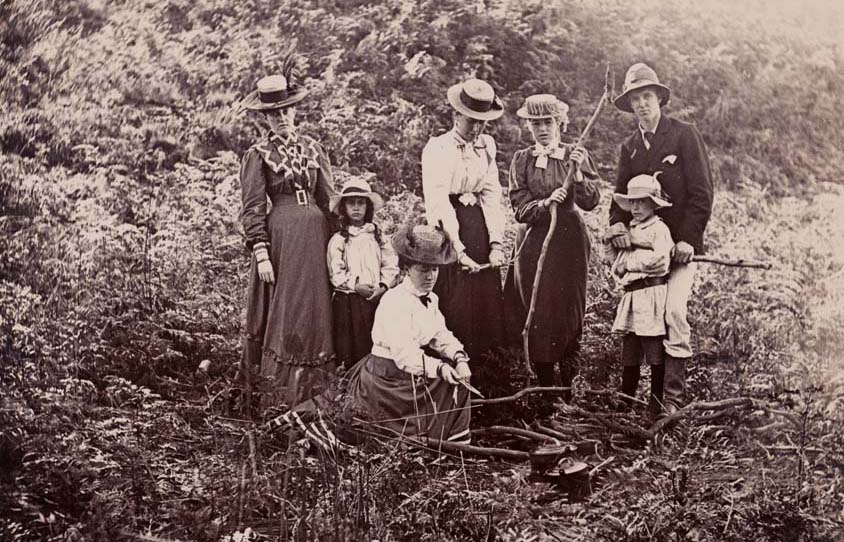
Grimwade and his wife often invited clergymen from poorer country dioceses to come and holiday at ‘Coolart’ while Alfred Felton, when he could be persuaded, was a welcomed guest. The older man was very formal; he and Grimwade never addressed each other by their given names.
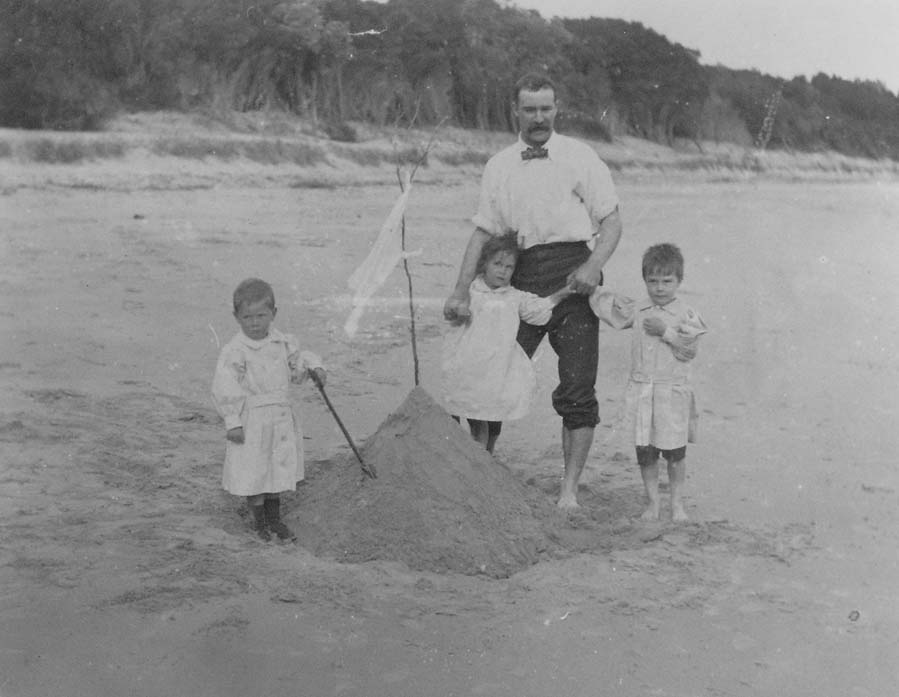
‘Coolart’ in the Balnarring Community
The Grimwades took an interest in the community into which they had moved. Soon after purchasing ‘Coolart’ it was reported in a local newspaper that Grimwade had travelled down by train to vote in the local council elections – the first owner of ‘Coolart’ to have done so. That, obviously, made an impression. ‘Coolart’ became a centre for the wider Balnarring community. Before St Mark’s, Balnarring’s Anglican church, was built services were held periodically in the Grimwade home. The vicar arrived from Hastings to officiate. He was often accompanied by his small daughter whose mother had been hospitalised with rheumatoid arthritis. On learning this, Mrs Grimwade sent the pony and trap into Hastings every Monday morning to bring the child back to Coolart to be educated. The little girl stayed through until Friday, receiving lessons from their daughter’s governess. After St Mark’s was built, Mrs Grimwade, although no longer living at ‘Coolart’, donated altar cloths and communion vessels.
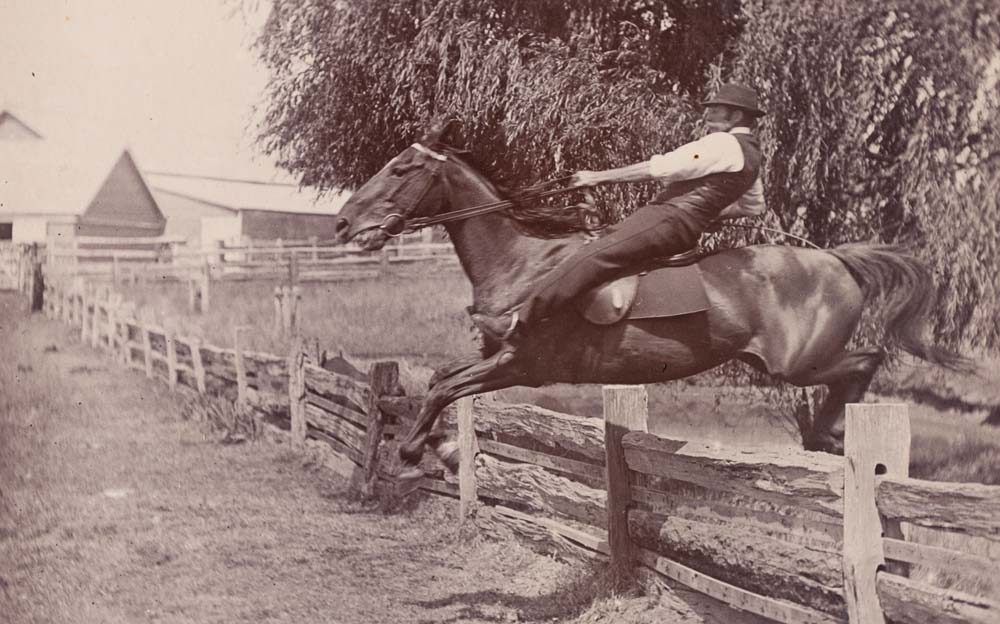
In 1900, Mrs Elizabeth Bootle, the eldest Grimwade daughter, invited the ladies of Balnarring to meet for an afternoon, once a week, over two months, to make items for a gift sale being organised to reduce the debt on the new hall at Balnarring. Grimwade, in his official capacity, had formally opened the Mechanics Institute and Lending Library and donated a set of encyclopaedia. Later he wrote off the remaining debt.
Farmers brought their animals to the property to be treated by Morris with pharmaceutical cures and when a farm labourer from a neighbouring farm was bitten by a snake, he was rushed to Coolart where Mrs Grimwade treated him with two injections of chlorinated of lime. [Argus, 9 Jan. 1896]
Military Encampments
Easter brought a different activity to ‘Coolart.’ Then it became the scene for war games. Harold Grimwade had joined the Victorian Field Artillery in 1891 and his parents were happy to allow areas of their land to be used for an encampment. Here voluntary corps members came together to practise manoeuvres and the use of weapons. On 11th April 1908 a notice in the Mornington Standard warned that between the hours of 7.00 a.m. and 6.00 p.m. “all boats and persons on land should keep at a distance of 2000 yards on either side of the line of fire, for a distance of four (4) miles from the battery”. This applied to the area “from the vicinity of Coolart Creek towards the beach, Point Sumner”. Later, warnings were issued about people handling unexploded shells, adding that there was “no reward or payment of any description for finding shells”.
Harold Grimwade served with distinction in World War One, rising to the rank of Major General.
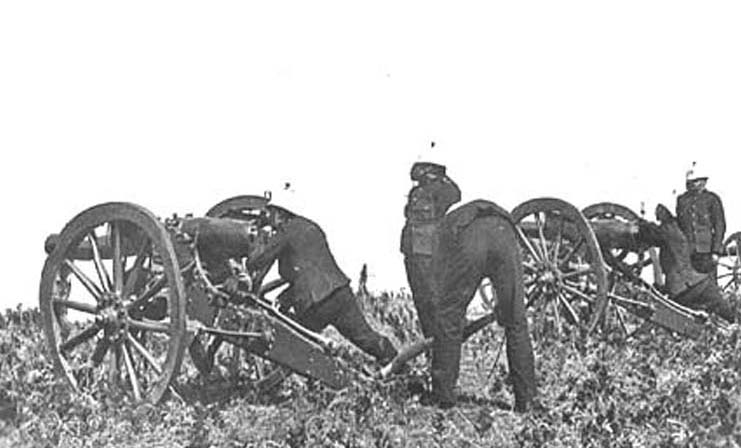
End of an Era and Beyond
In 1907, twelve years after having bought ‘Coolart’, Grimwade put the property on the market. His health had declined and he had been advised by his doctor to slow down. The livestock, even his beloved Bobadil, were sent to Newmarket for auction. The property passed to Gippsland grazier, Thomas Armstrong, for the price of £7 10s per acre and the Grimwades moved on. Frederick S. Grimwade died in August, 1910
That same year Armstrong put Coolart on the market again, asking double the price he had paid. It attracted Dame Nellie Melba who was looking for a county residence for her retirement but she chose a smaller property in the Yarra Valley. Instead it was bought by George Fairbairn for his daughter and son-in-law, Captain Balmain, who were about to return from India. Balmain leased ‘Coolart’ in 1921 when the family left Australia to live in England and it was sold the following year.
The next owner, Stuart Robertson kept the property for three years before again advertising it for sale in 1925. ‘Coolart’ lands were virtually cut in two when the road to Balnarring Beach was put through and he sold the western half, about 1000 acres, for subdivision. The remaining 971 acres with its “stately two-storied brick homestead” was bought by J.S. Feehan. Feehan also bred race horses. During his ownership he donated a corner of land close to the beach to Melbourne’s governor, Lord Somers, for a boys’ camp.
Just over a decade after buying ‘Coolart’ Feehan was forced to sell because of failing eyesight and it waspurchased by Thomas Luxton. An avid bird-watcher, Luxton had ‘Coolart’ declared a sanctuary and developed the lagoon as a breeding place for water fowl. He farmed the property for more than thirty years and after his death, in 1968, his daughter, Margaret Roffey continued the Luxton connection. The homestead, lagoon and surrounding paddocks, 216 acres (87.5 hectares) were purchased by the Victorian State government in 1977. The remainder of the estate was subdivided.
Many changes have occurred to the property over the past 130 years but the mansion Grimwade built, with its impressive tower, remains the defining feature of ‘Coolart’ and a distinctive landmark of the Balnarring area.
HARLESTON
The Grimwade family’s primary home was ‘Harleston’ in Balaclava Road, Caulfield. Designed by Thomas Wells and built in 1875, twenty years before “Coolart’, it shared the same double storeyed Italianate style. It was where Mr And Mrs Grimwade lived for forty years,
Frederick Grimwade died in 1910 just three years after he sold ‘Coolart’ and Jessie died in 1917. After the death of their mother the family donated ‘Harleston’ and it’s seven acres to Melbourne Grammar School. All four sons were educated at Melbourne Grammar and F.S. Grimwade had been a school governor and on the school council for a number of years‘.
Melbourne Grammar opened “Grimwade House’ as a preparatory school for its junior students in February 1918. There have been changes over the years (it no longer takes boarders and is now co-educational) but the gracious old house continues to be ‘school’ for both young boys and girls starting their education at Melbourne Grammar.
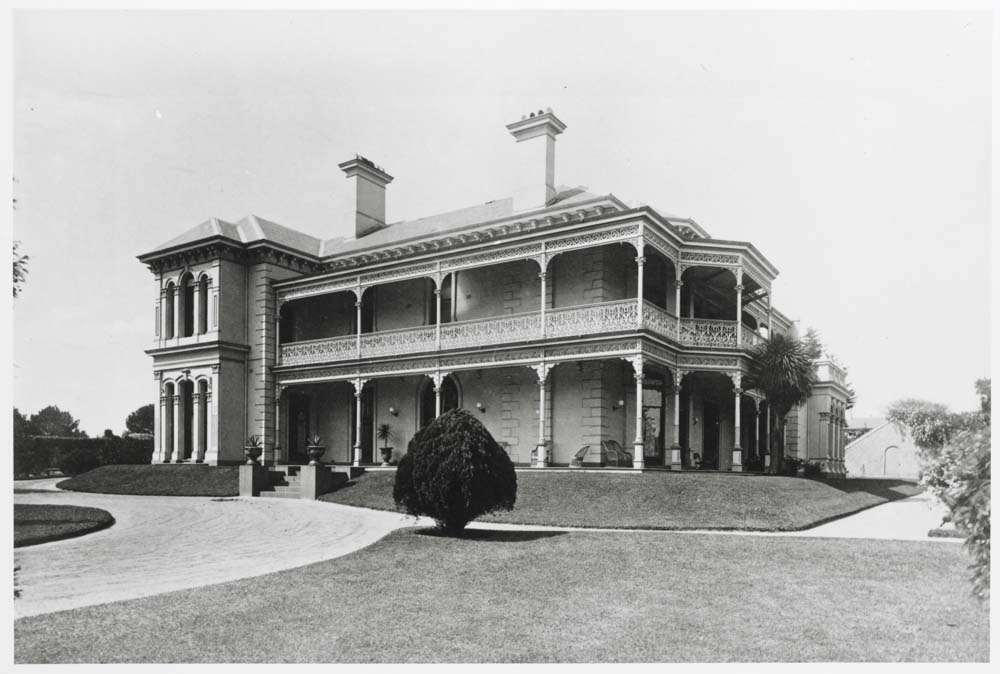
References:
- Flinders Lane Recollections of Alfred Felton by Russell Grimwade. MUP 1947
- Coolart, a short history by John Webb. Friends of Coolart 1996
- Australian Dictionary of Biography
- Punch magazine, April 21st, 1904, article by “Lauderdale”
- various newspapers from the time: the Argus, Mornington Standard, Australasian
- Photographs, unless otherwise noted, were taken by Russell Grimwade and are from the Sir Wilfred Russell and Lady Mabel Grimwade collection, held by University of Melbourne Archives. They are reproduced with permission. The other photos are used courtesy of Coolart.
Coolart is managed by Parks Victoria and is open to the public seven days a week. (9.00 a.m. – 5.00 p.m.)
Location: Lord Somers Road, Somers. Melway 193 J9
